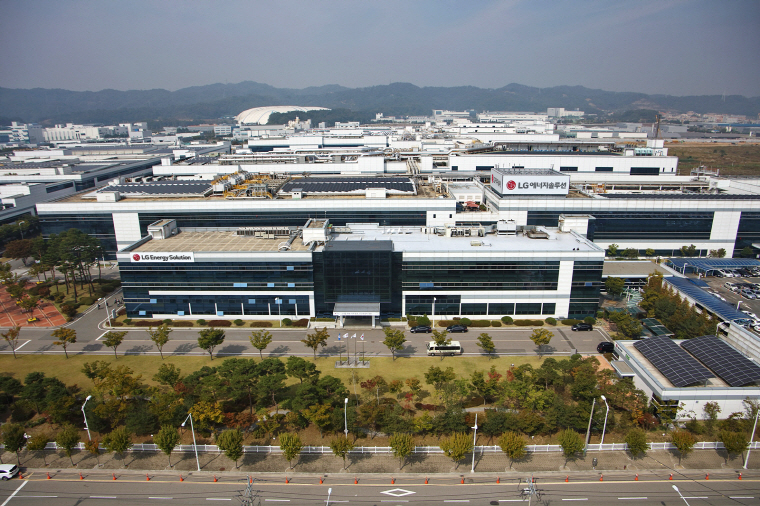LG Energy Solution hits record earnings on upbeat US sales
By Byun Hye-jinPublished : Jan. 26, 2024 - 16:43

Despite the slowdown of electric vehicle sales, LG Energy Solution broke the record in earnings last year, largely driven by a boost in sales in the all-important US market.
In its earnings report released Friday, the battery maker said its annual revenue surged by 31.8 percent to 33.7 trillion won ($25.3 billion) while operating profit skyrocketed 78.2 percent to 2.2 trillion won -- both hitting all-time high figures.
With robust sales in the US, some 677 billion won worth of tax credits were applied on the mass production of batteries in its first joint venture plant with General Motors in Ohio, along with its own Michigan plant under Washington’s Inflation Reduction Act. This contributed to boosting operating profits last year, the firm said.
However, the adjustments in major original equipment manufacturers' EV sales, coupled with the drop in price of key metal materials, dragged down the firm's revenue to 8 trillion won in the fourth quarter, down 6.3 percent on-year and 2.7 percent on-quarter.
Operating profits climbed 42.5 percent from a year earlier to 338.2 billion won, but dipped by 52.7 percent from the previous quarter.
For 2024, the company projected the growth rate of global EV markets to decrease from an average of 30 percent to the 20 percent range. Although Europe is likely to see a slower rebound due to inflation risks and EV subsidy cuts, it said electric car demand in North America will witness growth of more than 30 percent.
Due to the ongoing slump in metal prices that leads to lower battery prices, LG Energy Solution set a sales target of 4-6 percent growth for 2024.
“First quarter revenue is expected to fall compared to the previous quarter due to a drop in demand for batteries,” said Lee Chang-sil, chief finance officer at LG Energy Solution, during a conference call.
“But starting this year, IRA subsidies will be available for US consumers at the time of purchasing (electric cars) and our partner OEMs plan to launch new EV lineups in the first half of 2024, so we think the demand in the North American market will gradually recover from the second quarter.”
The company is also expected to receive twice as many IRA tax credits compared to last year on its annual production capacity of 45-50 gigawatt-hours in North America.
In a move to tackle the “Foreign Entity of Concern” requirement in the IRA that mainly blocks battery manufacturers from sourcing Chinese materials, LG Energy Solution is in talks with local companies to produce separators and electrolytes in North America, according to Kang Chang-beom, the company’s chief strategy officer. It is planning to source key minerals from Korea, Indonesia, Australia and Chile, as well.
Capital expenditure is projected at 10.9 trillion won, similar to last year, for investing in the new production bases.
A second joint plant with GM in Tennessee and a joint factory with Hyundai Motor Group in Indonesia will start commercial production this year. From 2025, the company plans to complete construction of the third LG-GM Michigan factory, a joint plant with Stellantis in Canada, an Ohio factory with Honda and one with Hyundai Motor Group in the state of Georgia. The firm is also looking to expand production capacity in its Michigan plant and build a manufacturing base for cylindrical and energy storage system batteries in Arizona.
However, the battery maker stressed that it would adjust investments depending on the market situation.
As for the product portfolio, LG Energy Solution will develop premium high-nickel cobalt, manganese and aluminum batteries consisting of more than 90 percent nickel, silicon anode applications, as well as high-voltage mid-nickel lithium iron phosphate batteries for the entry-level segment by 2025. The new 46 series cylindrical battery -- 46 millimeters in diameter -- is slated for production in the second half of this year.




















